- 资质:
- 评分:
1分 2分 3分 4分 5分 6分 7分 8分 9分 10分 7分
- 印象:
- 经营时间:16年
- 展厅面积:280平米
- 地 区:北京-通州-宋庄
动态立体现代主义风格美国画家雅各布·劳伦
2024-03-27 16:58:06 作者:温钦画廊 来源:www.o2oart.cn
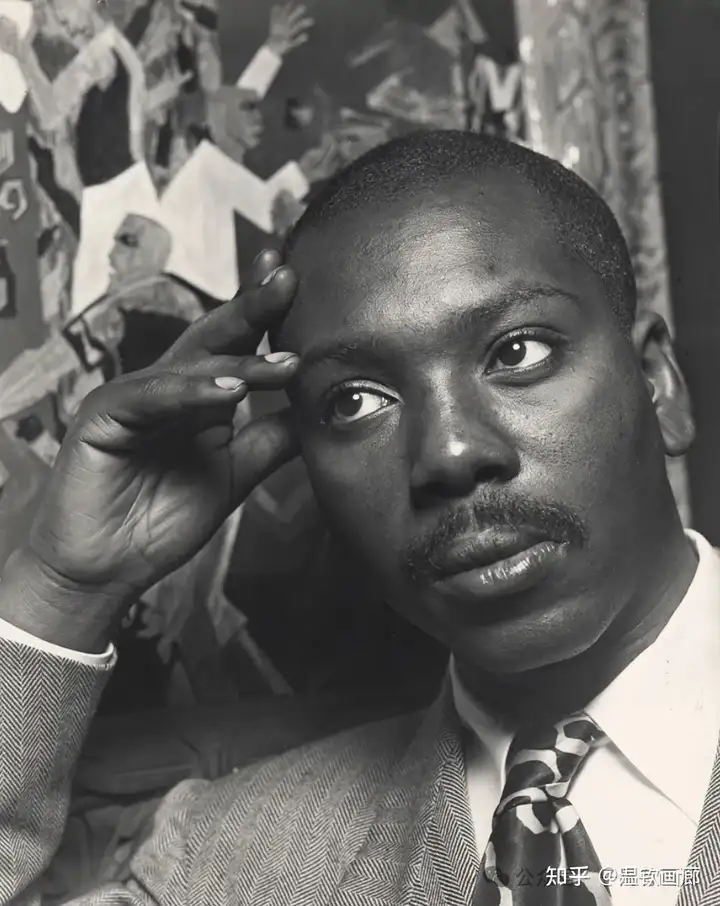
哈莱姆文艺复兴,也被被称为“新黑人运动”,由1925年作家阿兰·洛克的诗集名字命名。哈林文艺复兴通常被认为开始于1918年左右一直跨越到30年代中期。它的许多思想在此后还存在了很长一段时间。这个“黑人文艺绽放”运动到达顶峰时期在1924年到1929年之间。
曾有作家描写道“哈菜姆不只是一个殖民地、定居地,更是一座黑人城市,位于白人聚居的曼哈顿中心,这里黑人比世界上任何地方都要多”。

The 306 Workshop Group in front of 306 West 141st Street,Late1930s
虽然哈莱姆文艺复兴集中在纽约曼哈顿的哈莱姆区,但是,许多住在巴黎的来自非洲和加勒比海殖民地的法语黑人作家也受到了哈莱姆文艺复兴的影响。这场运动旨在邀请非裔美国艺术家们通过实践各种艺术形式来打破对黑人的种种刻板印象、提高知名度的同时一并提升美国黑人的形象,很多作品主题以快乐为主,但艺术家们也并没有回避现实中尖锐的社会矛盾,比如:疏远、歧视、隔离,以及在一个白种人世界里,黑人身份的种种窘境。
哈莱姆文艺复兴中最著名的画家是雅各布·劳伦斯( Jacob Lawrence ,1917-2000年)。1937年,劳伦斯获得了纽约美国艺术家学院的奖学金。1939年毕业时,他获得了美国工作进展管理局联邦艺术计划的资助。他已经发展出了自己的现代主义风格,并开始创作叙事系列,在一个主题上绘画30幅或更多绘画。他完成了他最著名的黑人移民系列,1941年。该系列于1942年在伊迪丝·哈珀特(Edith Halpert)的市中心画廊展出,使劳伦斯成为第一个加入该画廊的非洲裔美国人。
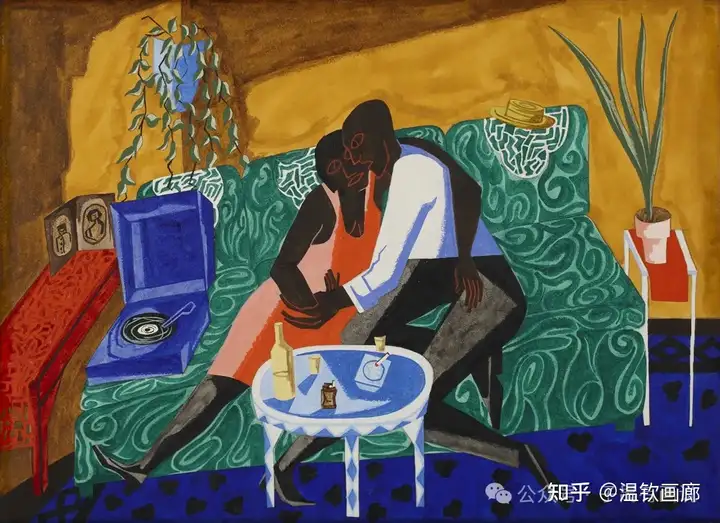
雅各布·劳伦斯 恋人, 1946
在其青少年时期(30年代),他进入联邦政府资助的哈莱姆艺术工作室( Harlem Art Workshop )和哈莱姆社区艺术中心( Harlem Community Art Center )进行艺术方面的学习。劳伦斯经常到市中心区,从这里展出的艺术品中吸收灵感,从现代艺术博物馆的原始艺术展,到墨西哥织物,乃至所有欧洲最新的艺术风格。30年代晚期,他开始创作题献给黑人领袖的大型系列叙事画,他所敬献的人物包括哈里艾特.杜伯曼( Harriet Tubman )、图森·洛弗图尔( Toussaint L ' Ouverture )和弗雷德里克·道格拉斯( Frederick Douglass )。图像一般幅面较小、尺寸适中,用广告色在纸板或广告牌上绘制而成。
在第二次世界大战爆发时,劳伦斯被选入美国海岸警卫队。在佛罗里达州和马萨诸塞州短暂驻扎后,他被任命为部队士兵的海岸警卫队艺术家,记录了他环游世界时的战争经历。在此期间,他创作了近50幅画作,但最终全部丢失。劳伦斯旅行结束后,他获得了古根海姆奖学金。

雅各布·劳伦斯
红土 1947
硬纸板蛋彩画
1949年,他住进皇后区的希尔赛德医院,住了将近一年。作为设施的病人,他创作了反映自己情绪状态的艺术品,在其绘画中融入了柔和的色彩和忧郁的人物,这与他的其他作品形成了鲜明的对比。1951年,劳伦斯根据哈林区阿波罗剧院的表演记忆来绘画作品。他还再次开始教学,首先是在普拉特学院,后来在新的社会研究学院和艺术学生联盟。

哈莱姆街景,1942
1971年,劳伦斯在西雅图的华盛顿大学(University of Seattle)担任终身教授,直到1986年退休为止。在他任教期间,他度过了余生的大部分绘画工作,并制作了限量版画作以帮助为非营利组织提供资金,例如NAACP法律辩护基金,儿童辩护基金和朔姆堡黑人文化研究中心。他还为芝加哥的哈罗德·华盛顿中心,华盛顿大学和霍华德大学绘制壁画,并为纽约时代广场地铁站绘制72英尺的壁画。

“Self-Portrait”,1977
劳伦斯最为知名的作品是开始于1940年的《移民系列》( Migration Series )。其中表现了黑人移民北方的理由,以及其在南北两地的体验。虽然这个系列具有逸闻集的性质,但是图像本身却通过抽象的形式表达出很多意味,该系列中的第58号《黑人在北方享有更好的教育资源》( In the North the Negro Had Better Educational Facilities ,图28.54)
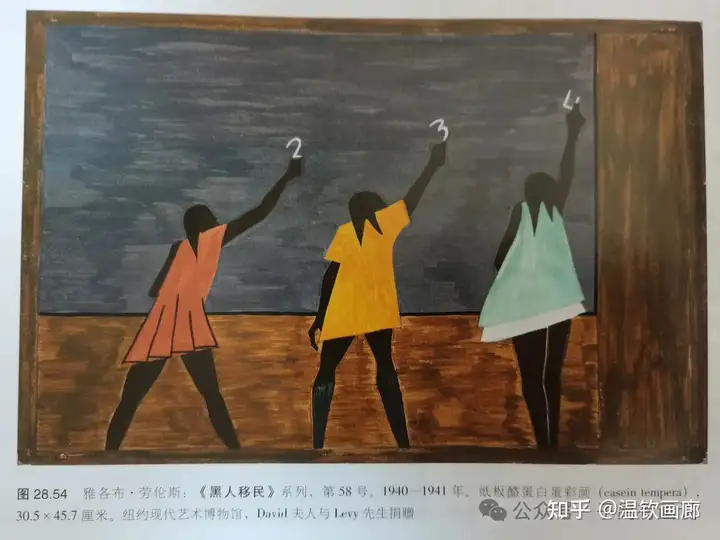
就是如此。三个女孩在黑板上写下数字,但是我们看不到她们的面孔。相反,人物的手臂越伸越长,数字的位置也越来越高,暗示教育对人素质的提升,而且开始部分的黑板空空如也。女孩色彩艳丽的衣裙是对生命与幸福的确认,而头发与裙子边缘则呈现出锯齿形和尖角形,显露出一股能量,以及奋斗不已的品质。劳伦斯在此主要展现了黑人的集体精神,这不是个人,也并非个人的表达。他关注人类的精神世界,精神无情而能量充沛地不断前行,以建构更美好的未来。劳伦斯疏朗且色彩优美的作品体现了一种非凡的心理状态,画面中对现代主义空间的运用更加强了这一点。平板的背景将人物推至画面表层,突出展示着他们的形象。
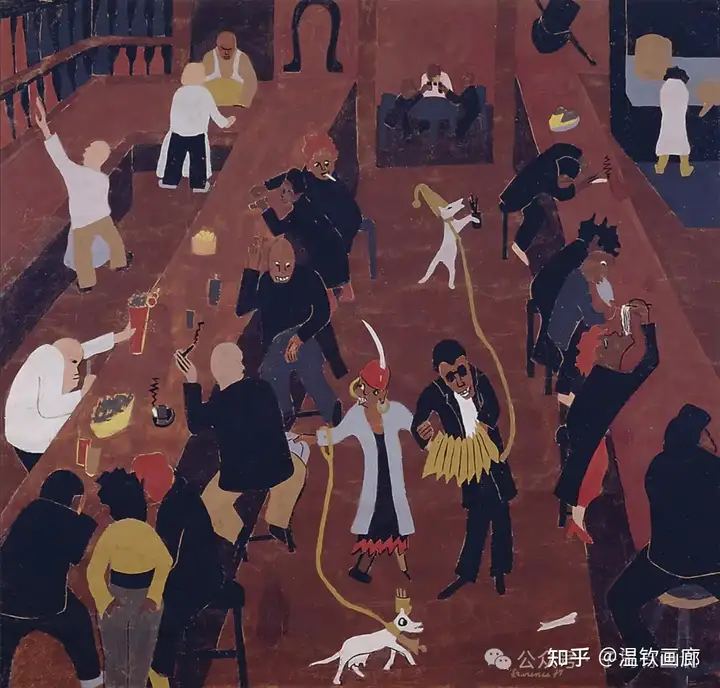
Bar ‘n Grill. 1937
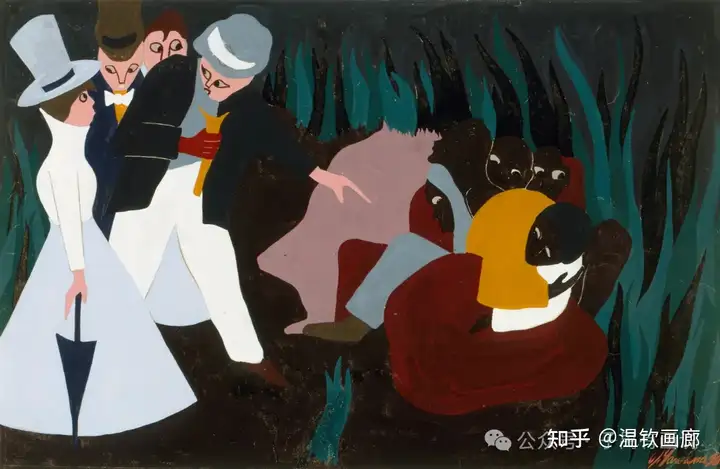
The Life of Toussaint L’Ouverture. 1938

The Life of Harriet Tubman. 1940
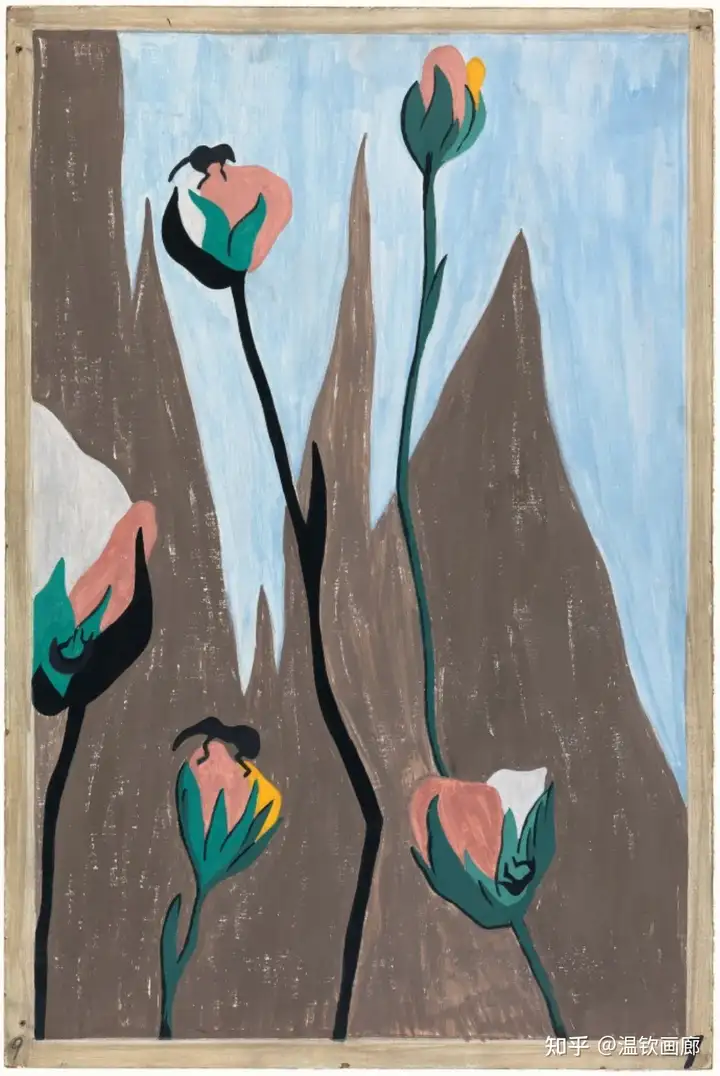
Another great ravager of the crops was the boll weevil.1941
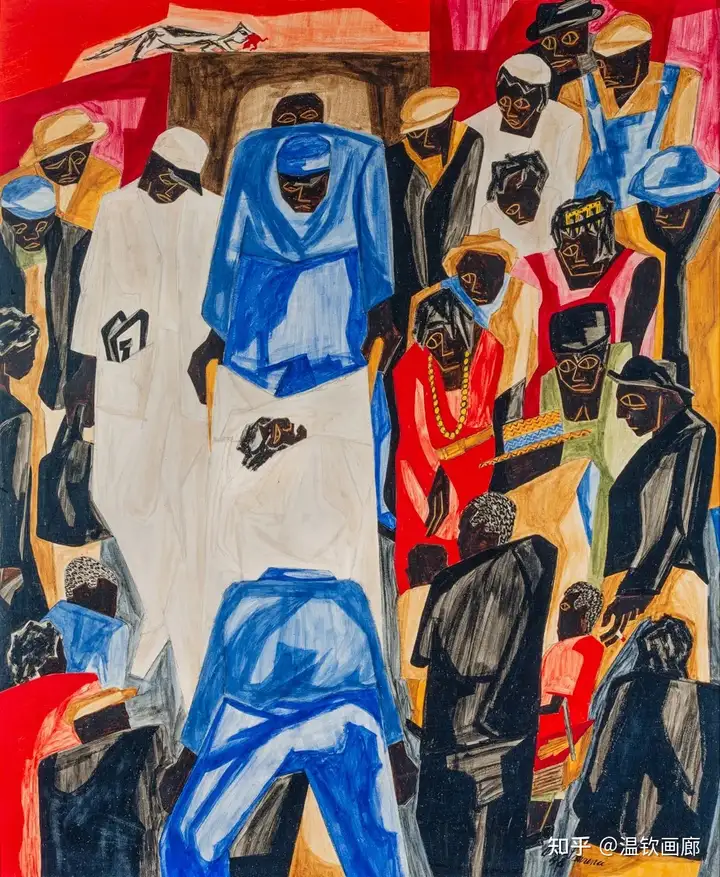
救护车呼叫, 1948 硬纸板蛋彩画
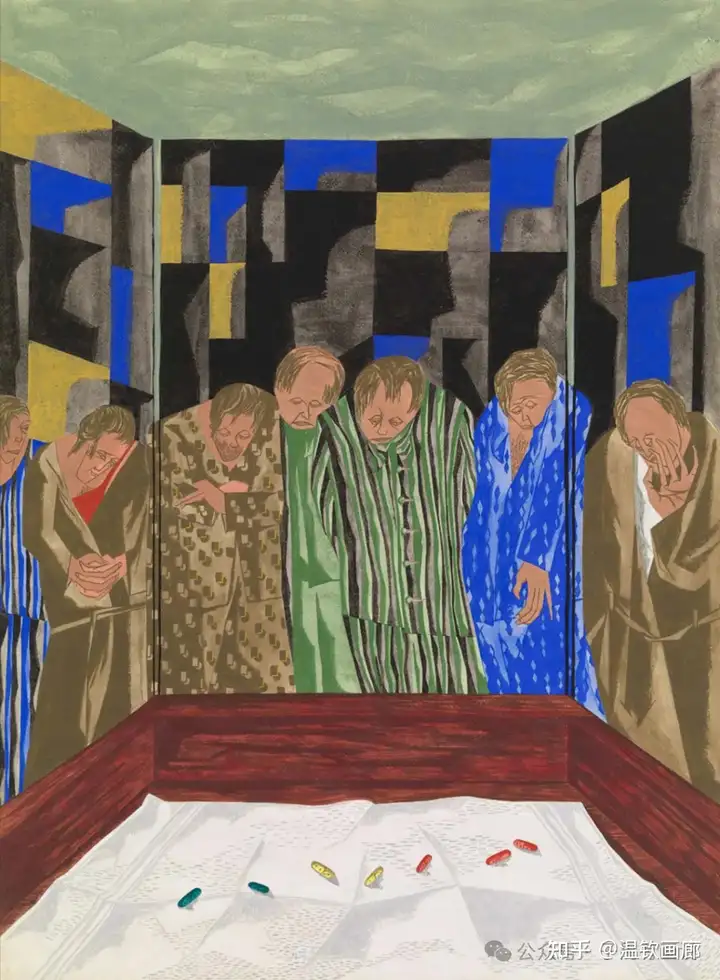
Sedation. 1950
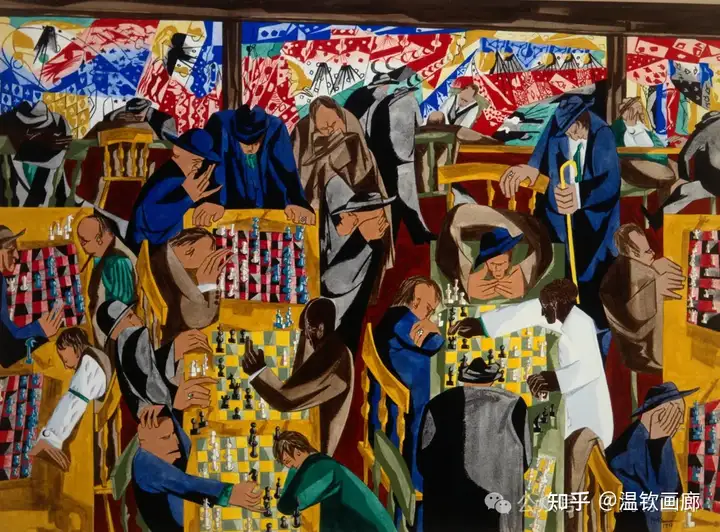
Chess on Broadway. 1951

Struggle:From the History of the American People. 1956

The Architect. 1959
他少年得志,仅仅20出头就获得了大众的认可,最著名的作品是《migration series》以“移民”为主题的系列绘画。描绘了非洲裔美国人从主打农耕文化的南方田园到主打工业的北方城市的大迁徙过程。“移民”主题系列一共有60幅叙事型绘画作品。其中,奇数编号的画作在华盛顿菲利普斯收藏中心,偶数编号的画作在MOMA纽约当代艺术博物馆展出。
以下60幅《移民》系列作品转载自以上两个艺术中心:
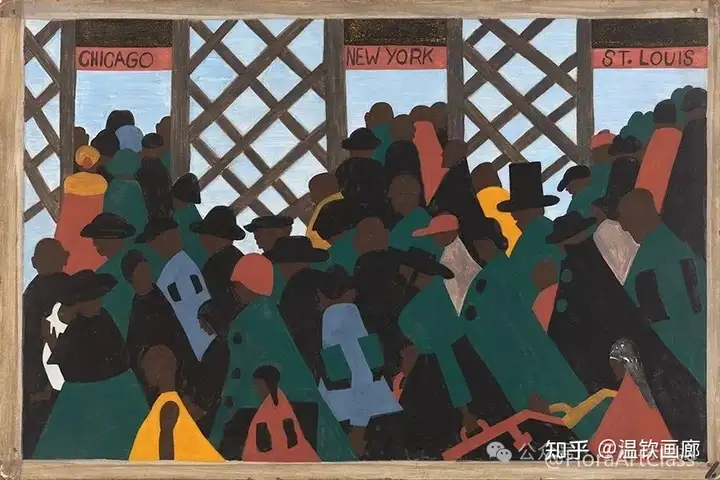
1 During World War I there was a great migration north by southern African Americans.

2 The war had caused a labor shortage in northern industry. Citizens of foreign countries were returning to their native lands.
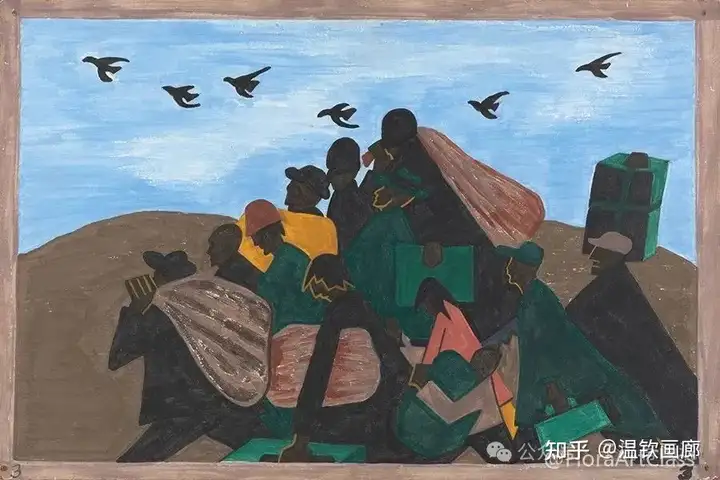
3 From every southern town migrants left by the hundreds to travel nor

4 All other sources of labor having been exhausted, the migrants were the last resource.
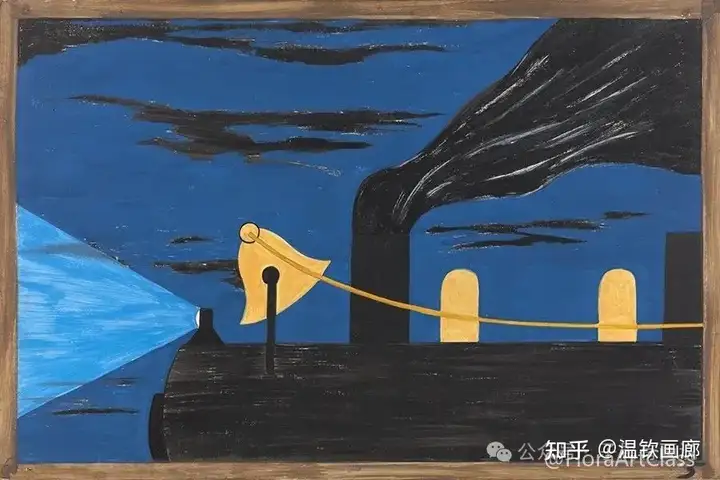
5 Migrants were advanced passage on the railroads, paid for by northern industry. Northern industry was to be repaid by the migrants out of their future wages.

6 The trains were crowded with migrants
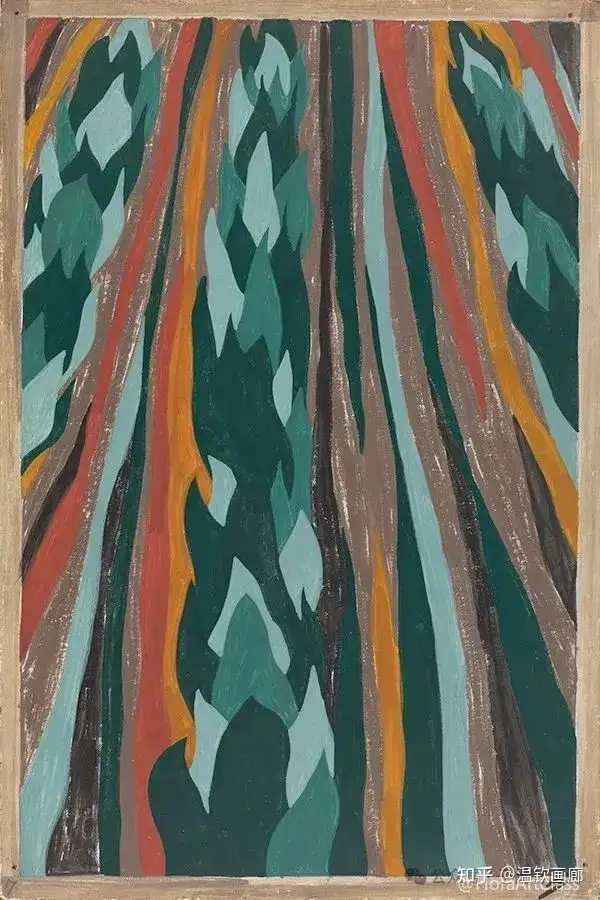
7 The migrant, whose life had been rural and nurtured by the earth, was now moving to urban life dependent on industrial machinery
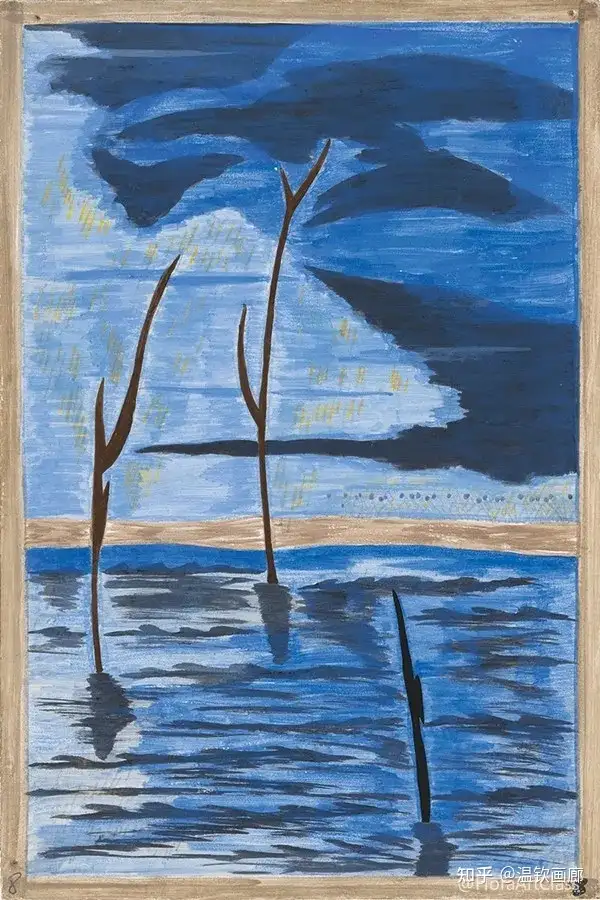
8 Some left because of promises of work in the North. Others left because their farms had been devastated by floods.
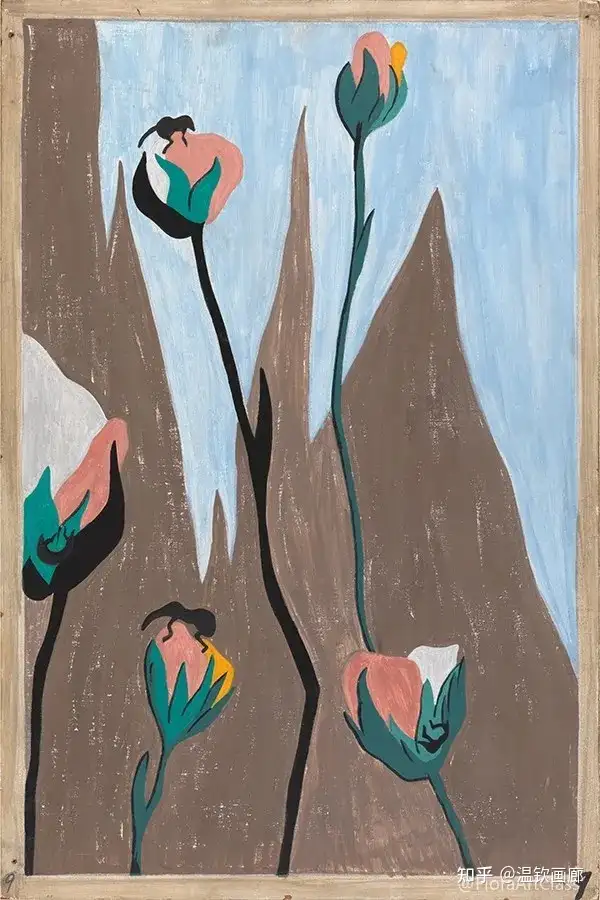
9 They left because the boll weevil had ravaged the cotton crop.
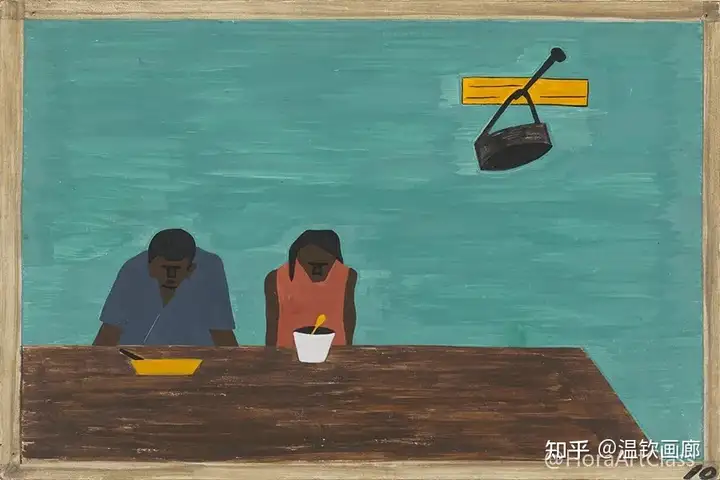
10 They were very poor.

11 Food had doubled in price because of the war.
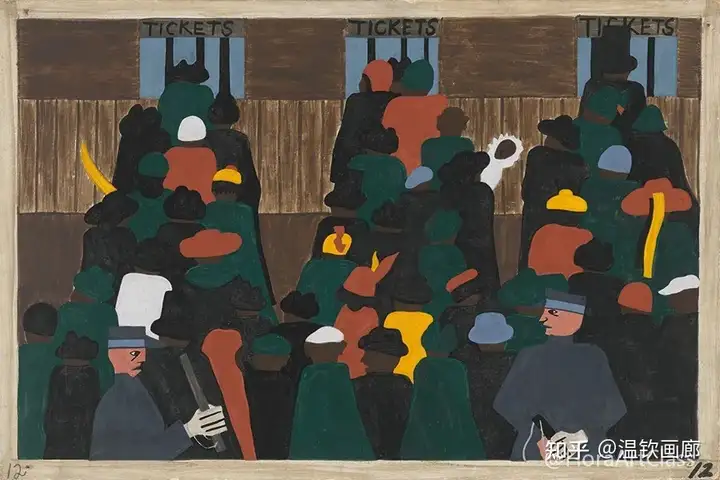
12 The railroad stations were at times so crowded with people leaving that special guards had to be called to keep order.

13 The crops were left to dry and rot. There was no one to tend them.

14 For African Americans there was no justice in southern courts.

15 There were lynchings.
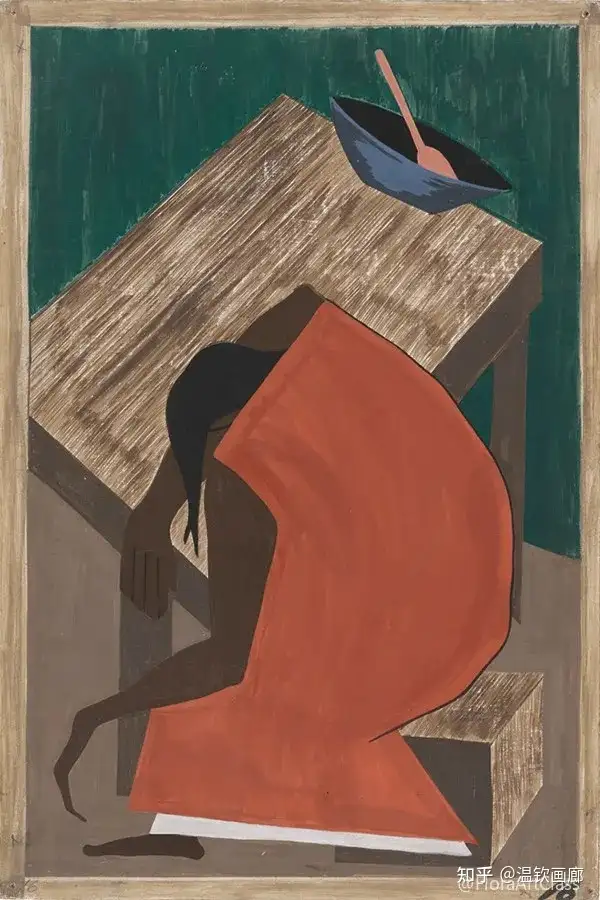
16 After a lynching the migration quickened

17 Tenant farmers received harsh treatment at the hands of planters.
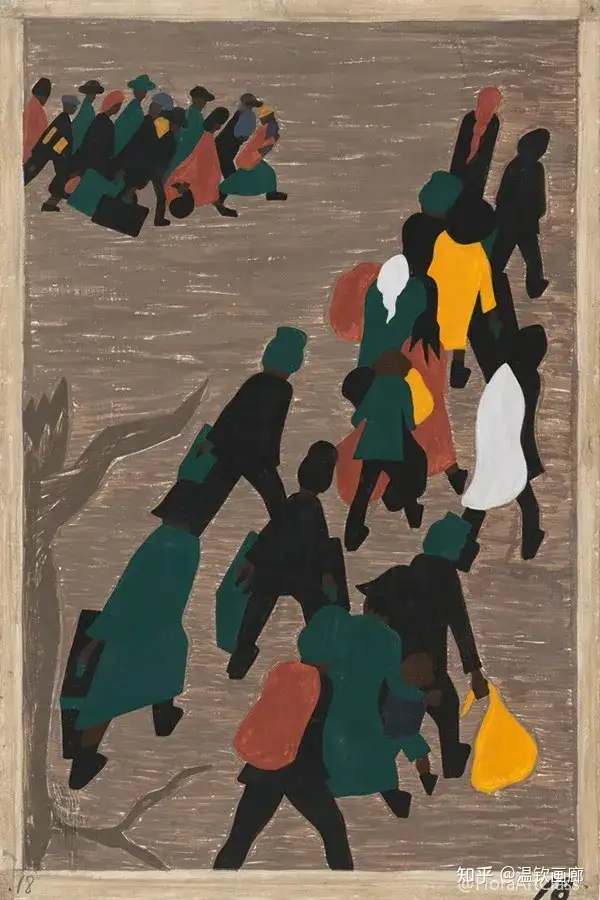
18 The migration gained in momentum.
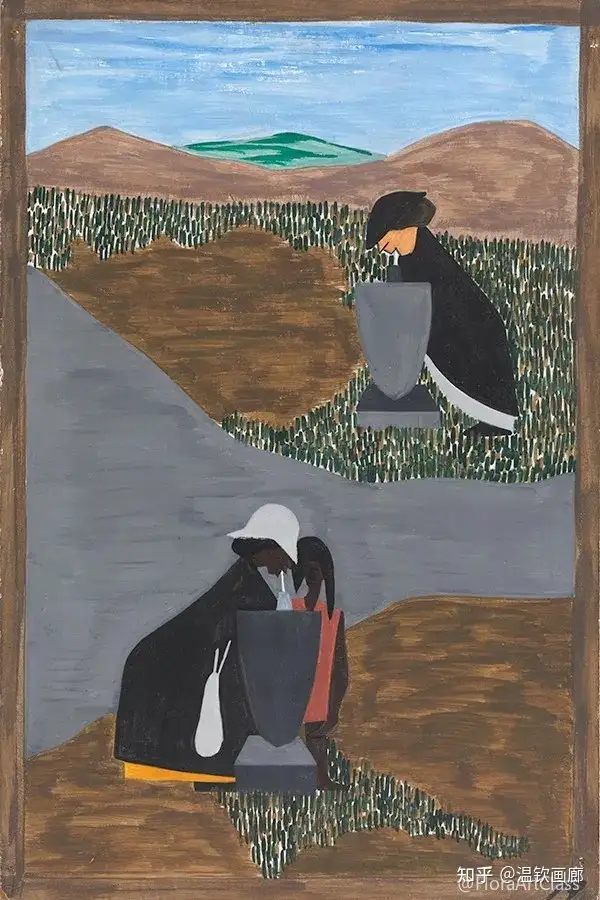
19 There had always been discrimination.
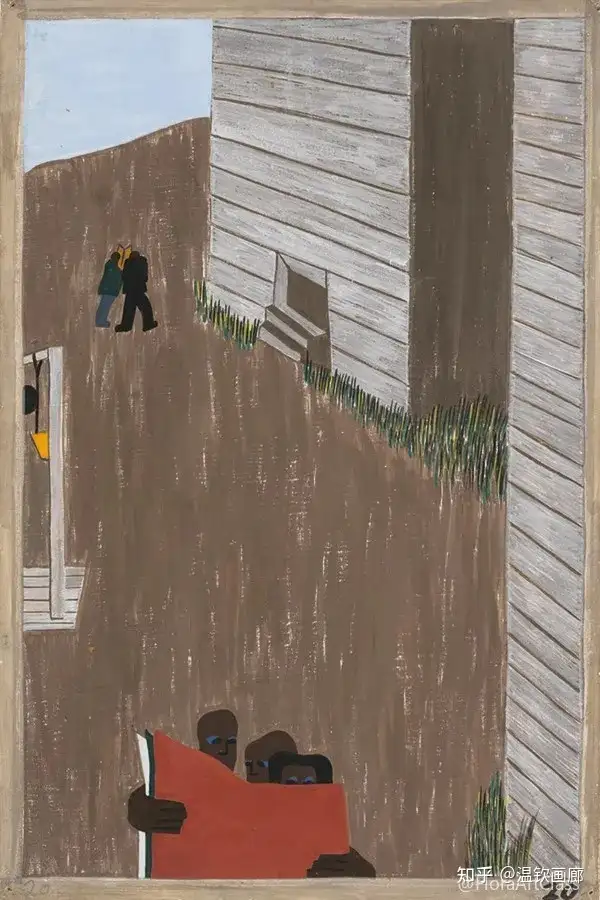
20 In many of the communities the black press was read with great interest. It encouraged the movement.
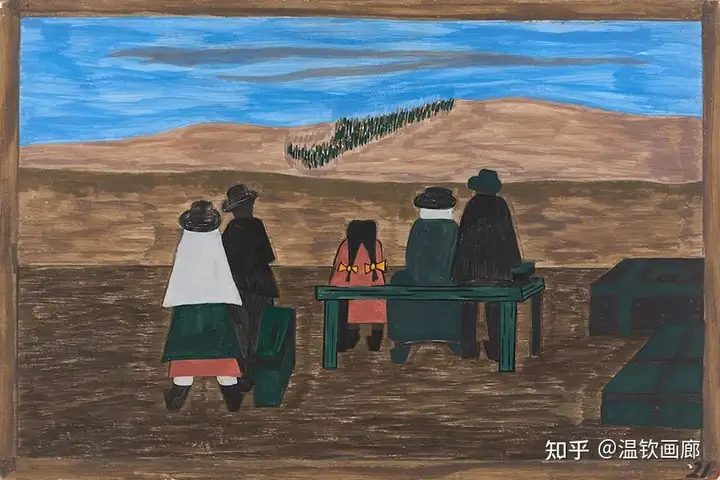
21 Families arrived at the station very early. They did not wish to miss their trains north.

22 Migrants left. They did not feel safe. It was not wise to be found on the streets late at night. They were arrested on the slightest provocation.
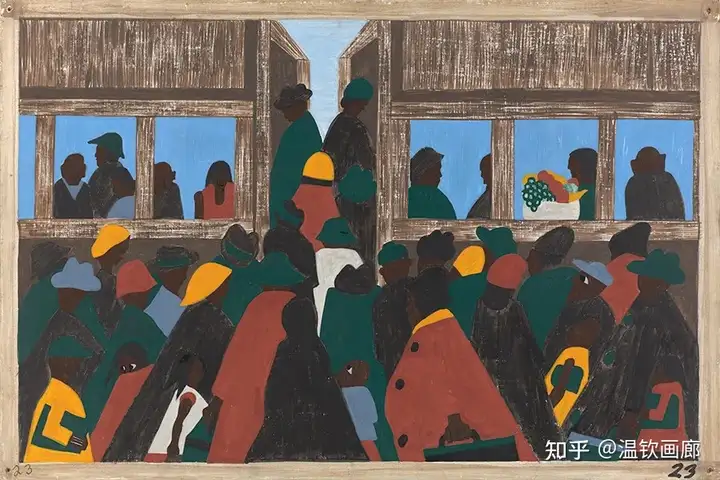
23 The migration spread.
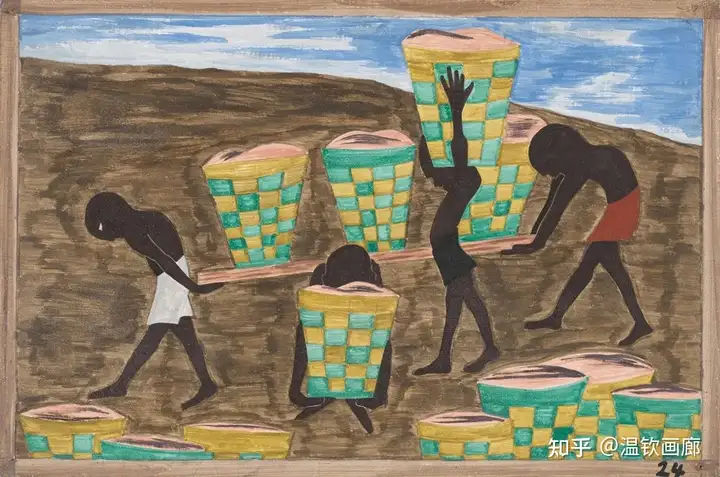
24 Their children were forced to work in the fields. They could not go to school.
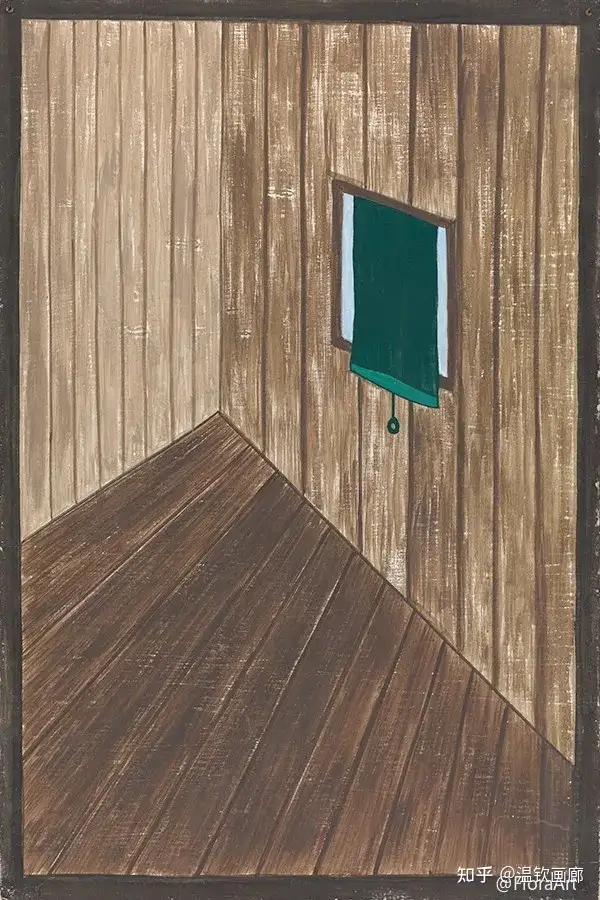
25 They left their homes. Soon some communities were left almost empty.
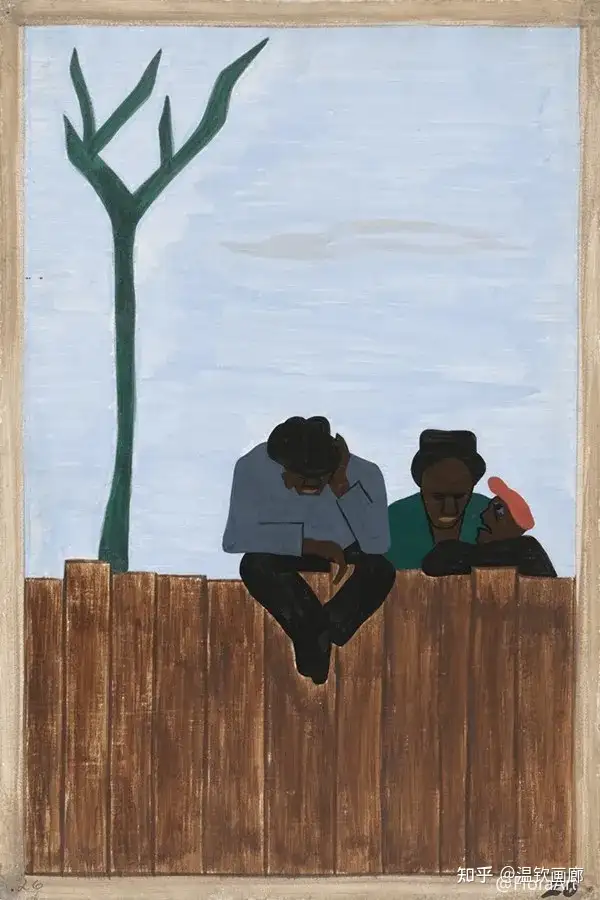
26 And people all over the South continued to discuss this great movement.
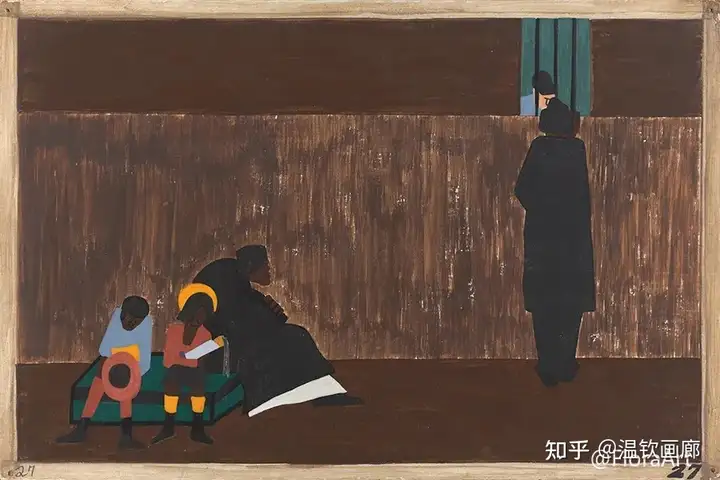
27 Many men stayed behind until they could take their families north with them.

28 The labor agent sent south by northern industry was a familiar presence in the black communities.
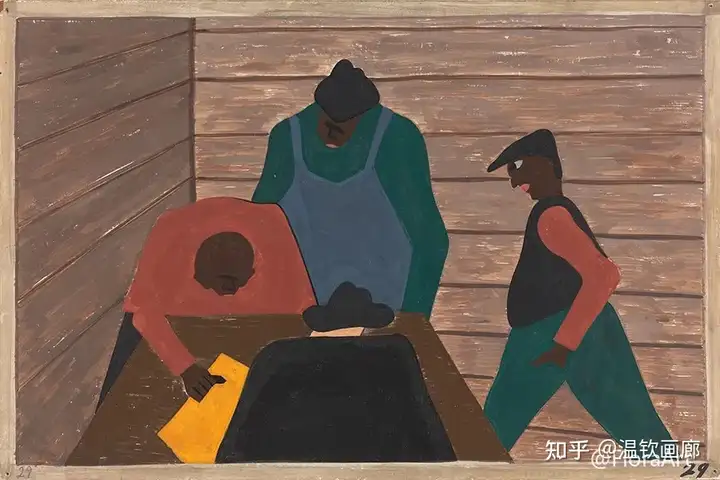
29 The labor agent recruited unsuspecting laborers as strike breakers for northern industries.

30 In every southern home people met to decide whether or not to go north.

31 The migrants found improved housing when they arrived north.
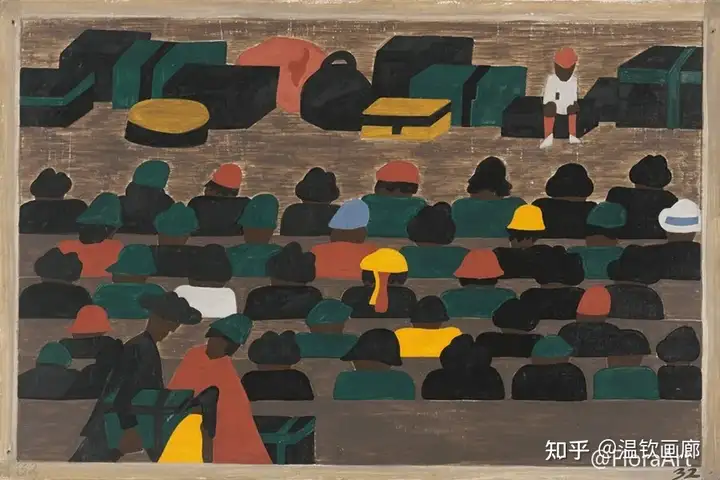
32 The railroad stations in the South were crowded with northbound travelers.
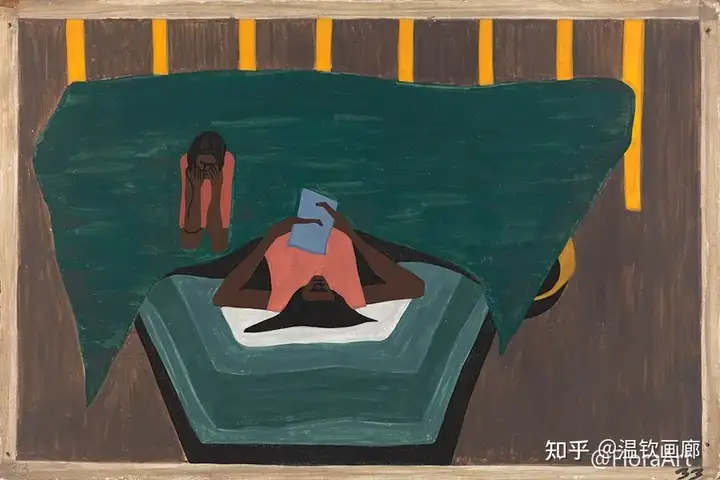
33 Letters from relatives in the North told of the better life there.

34 The black press urged the people to leave the south.
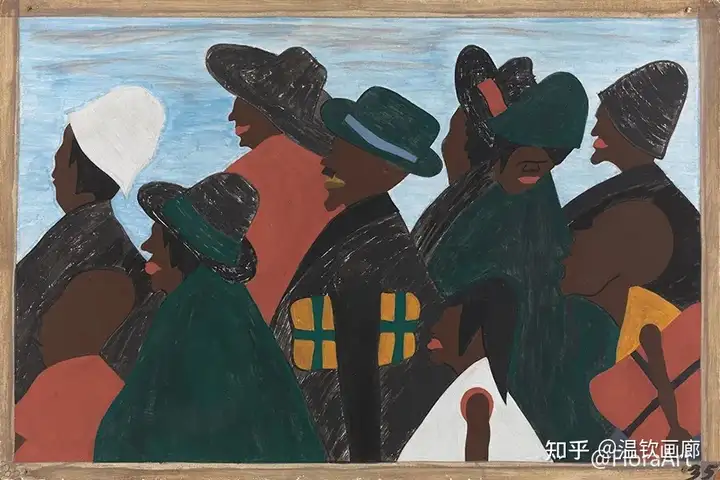
35 They left the South in great numbers. They arrived in the North in great numbers.

36 Migrants arrived in Chicago, the gateway to the West.
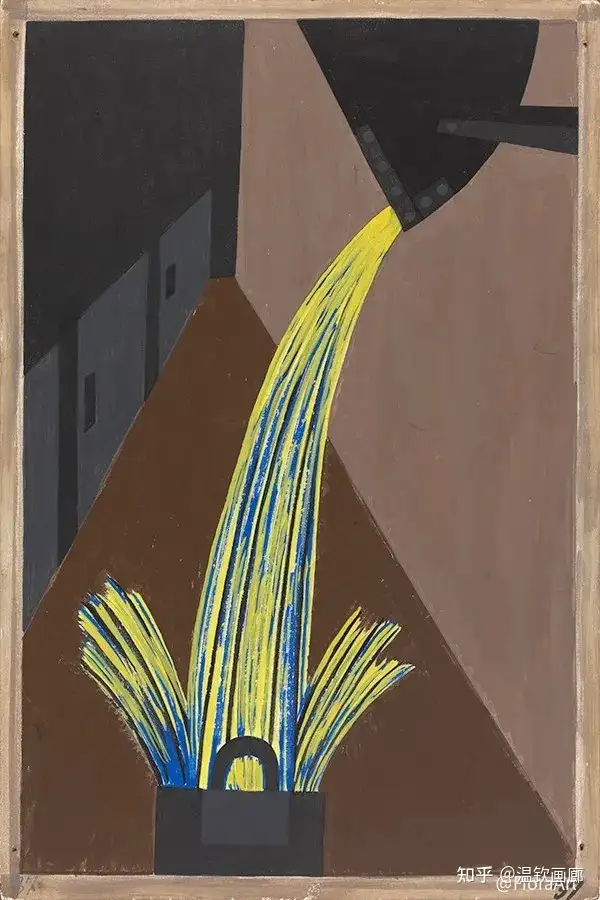
37 Many migrants found work in the steel industry.
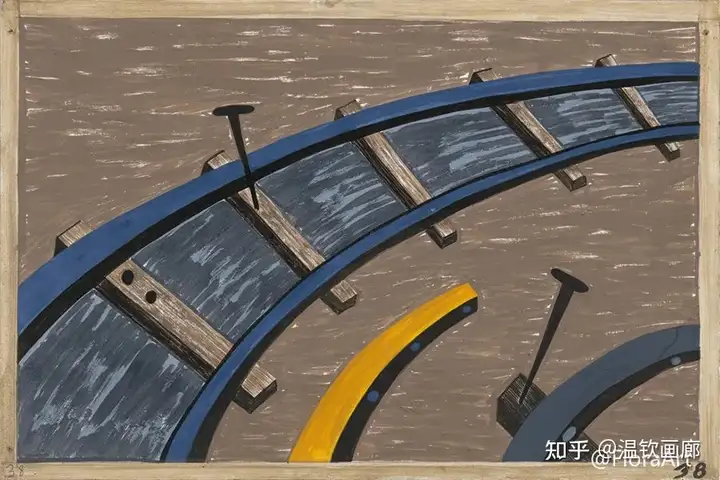
38 They also worked on the railroads.
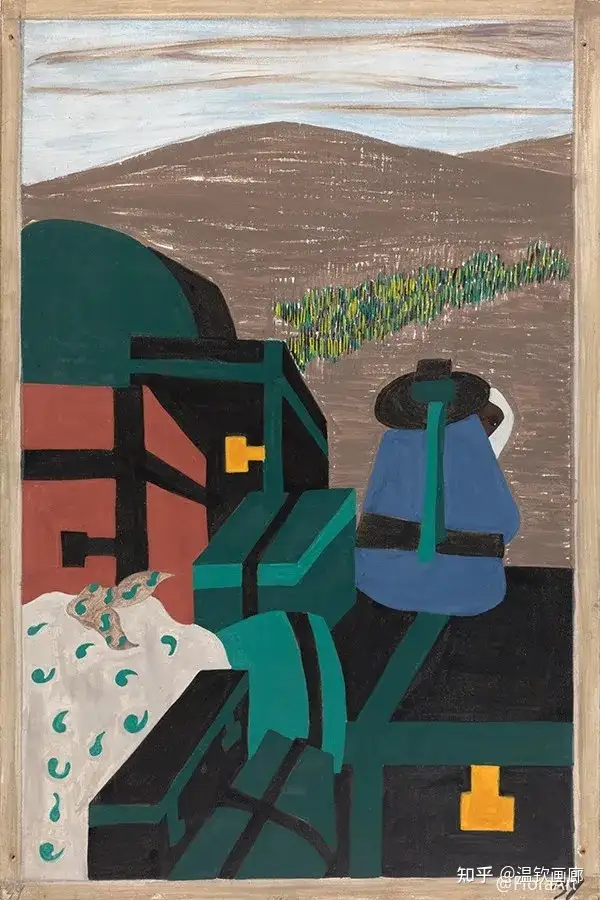
39 Railroad platforms were piled high with luggage.
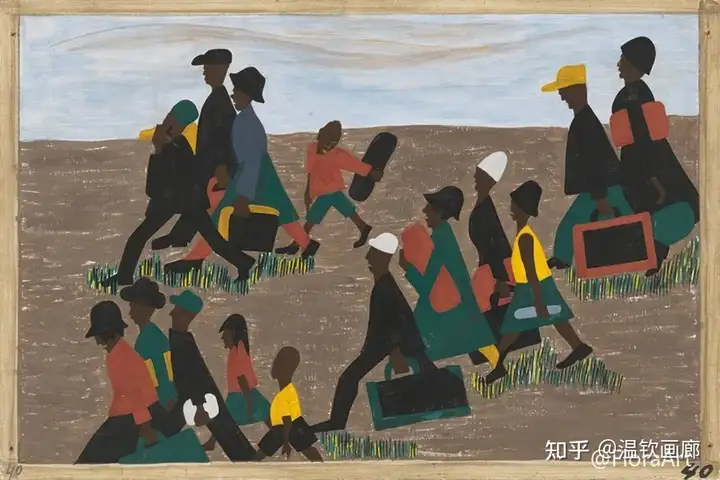
40 The migrants arrived in great numbers.
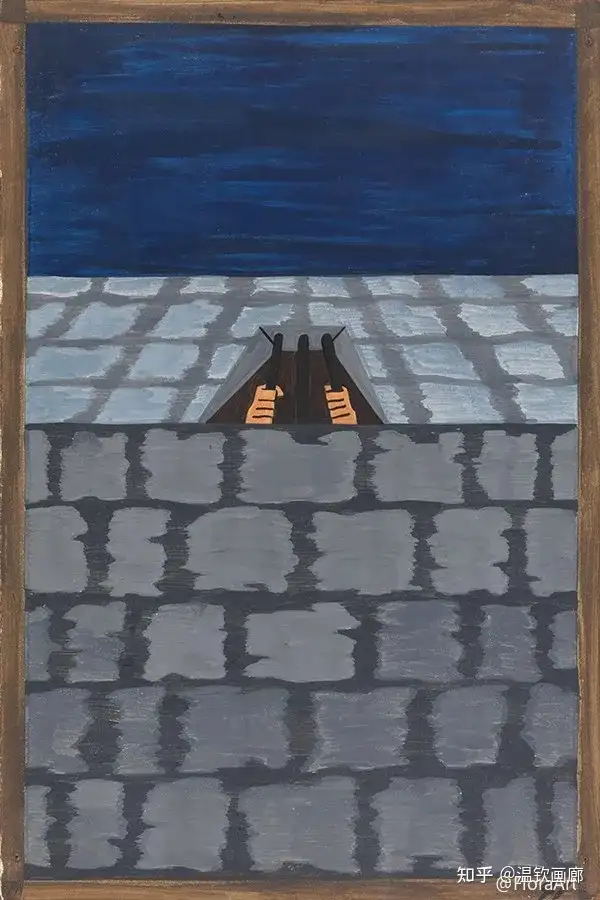
41 The South was desperate to keep its cheap labor. Northern labor agents were jailed or forced to operate in secrecy.
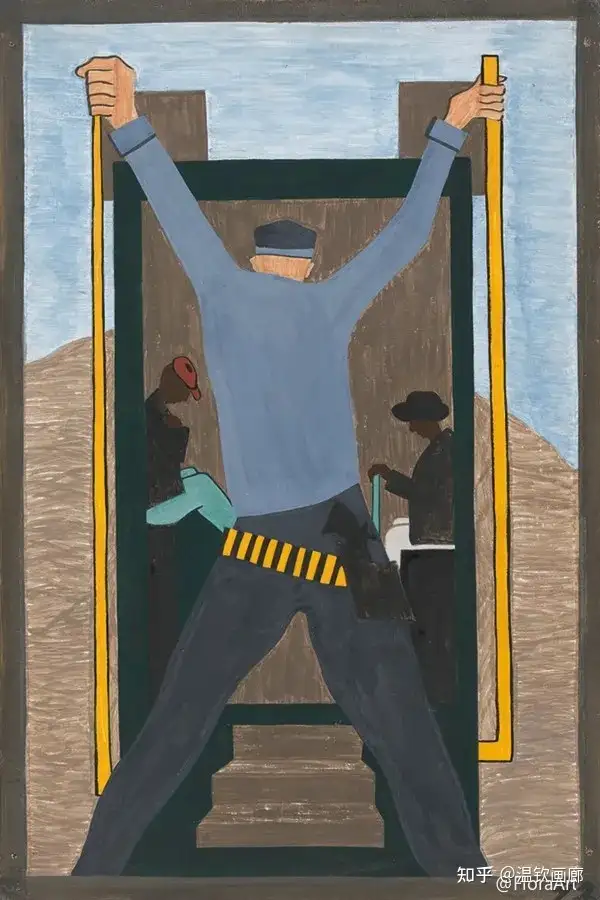
42 To make it difficult for the migrants to leave, they were arrested en masse. They often missed their trains.
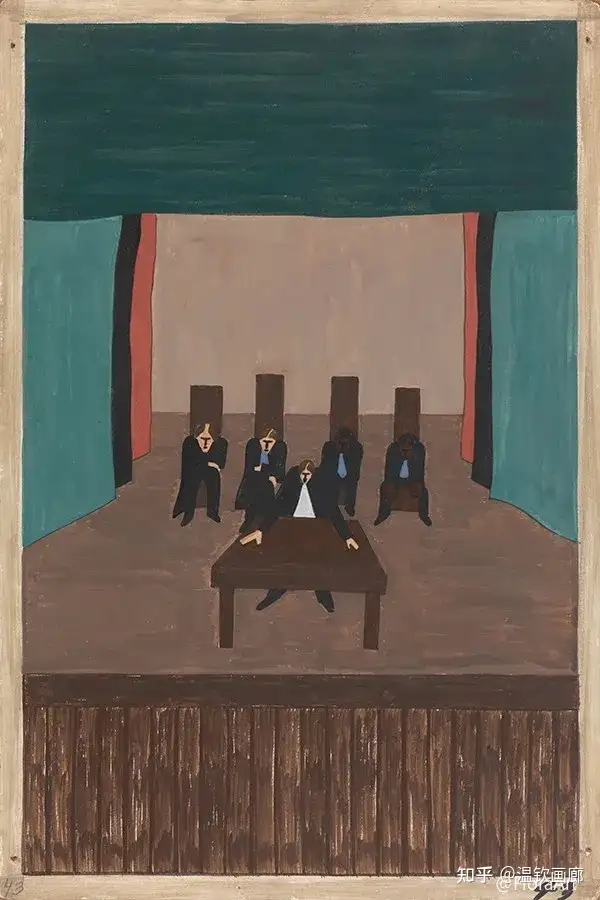
43 In a few sections of the South leaders of both black and white communities met to discuss ways of making the South a good place to live.

44 But living conditions were better in the North.
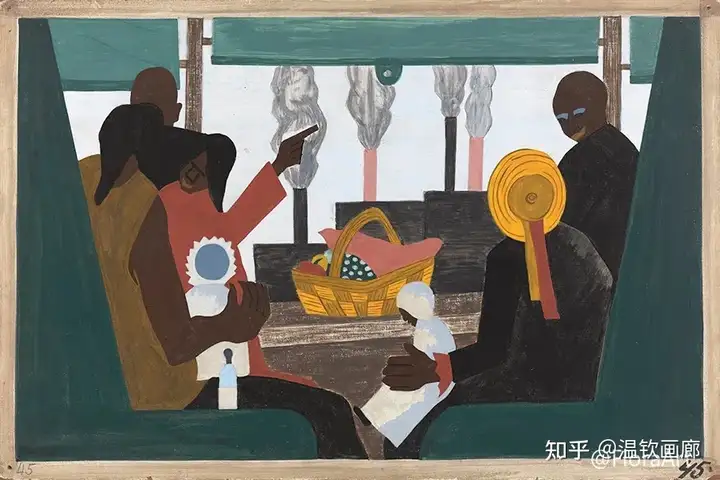
45 The migrants arrived in Pittsburgh, one of the great industrial centers of the North.

46 Industries boarded their workers in unhealthy quarters. Labor camps were numerous.

47 As the migrant population grew, good housing became scarce. Workers were forced to live in overcrowded and dilapidated tenement houses.
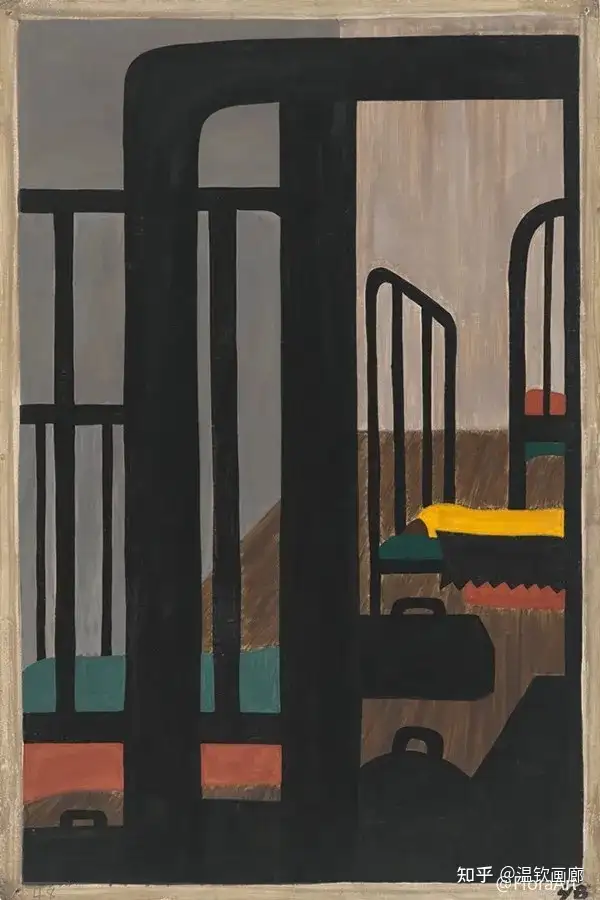
48 Housing was a serious problem.
.
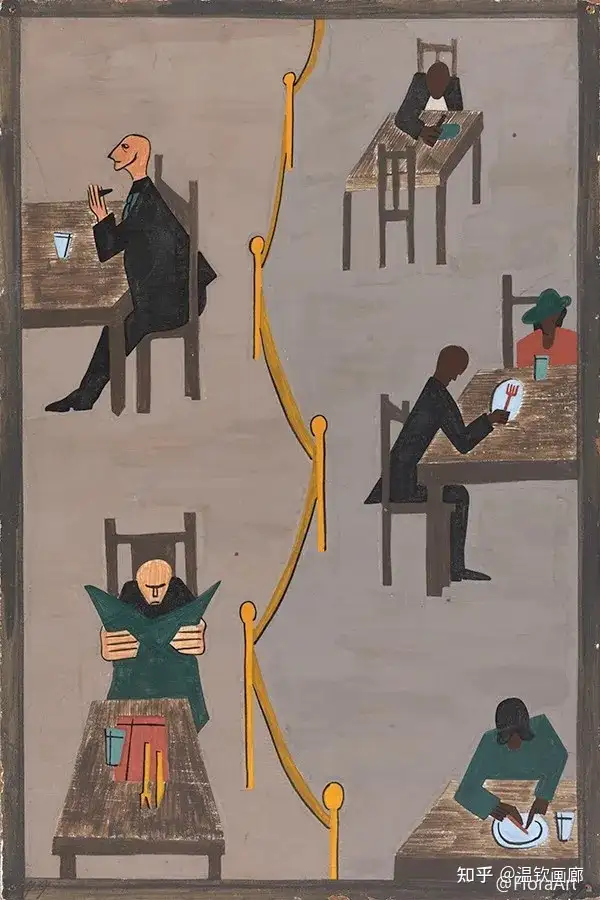
49 They found discrimination in the North. It was a different kind.
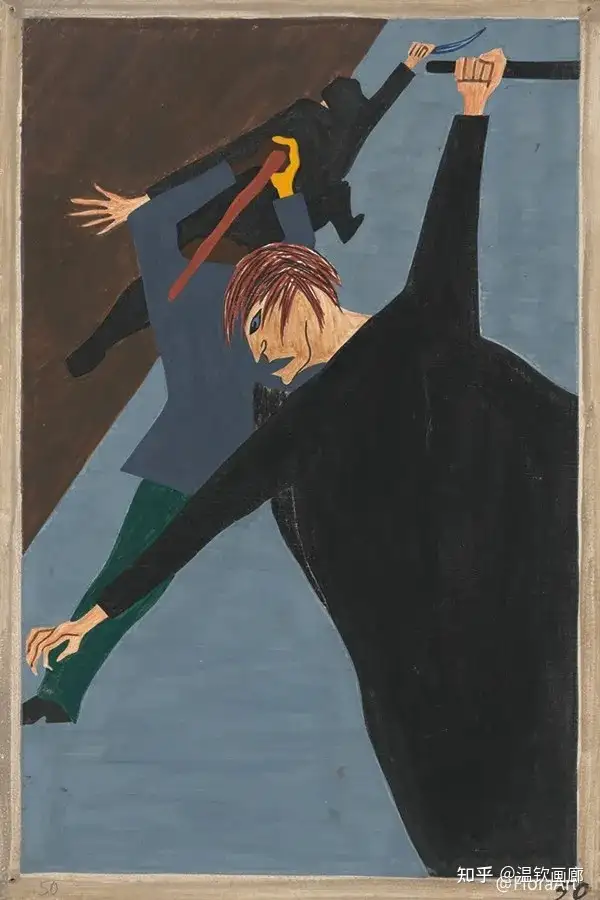
50 Race riots were numerous. White workers were hostile toward the migrant who had been hired to break strikes.
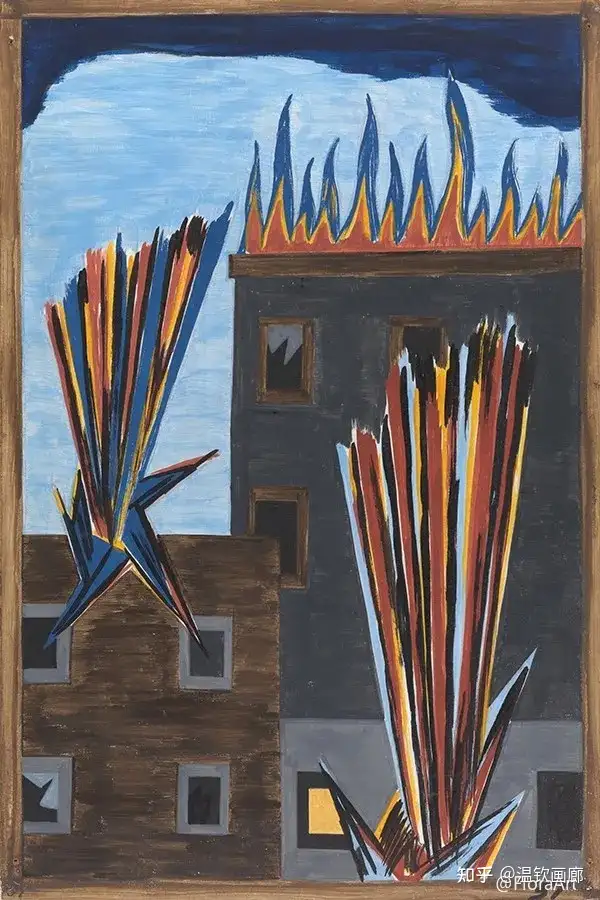
51 African Americans seeking to find better housing attempted to move into new areas. This resulted in the bombing of their new homes.

52 One of the most violent race riots occured in East St. Louis.
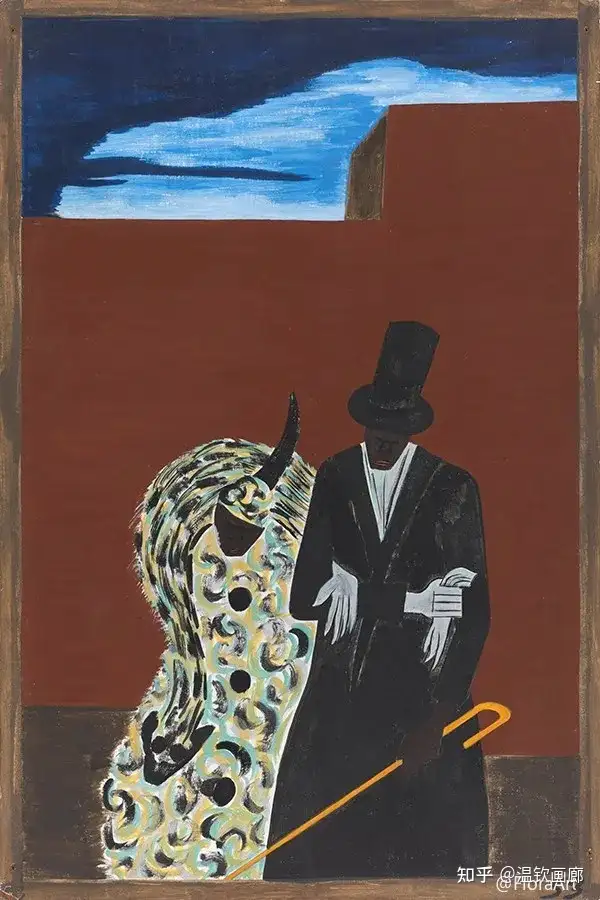
53 African Americans, long-time residents of northern cities, met the migrants with aloofness and disdain.
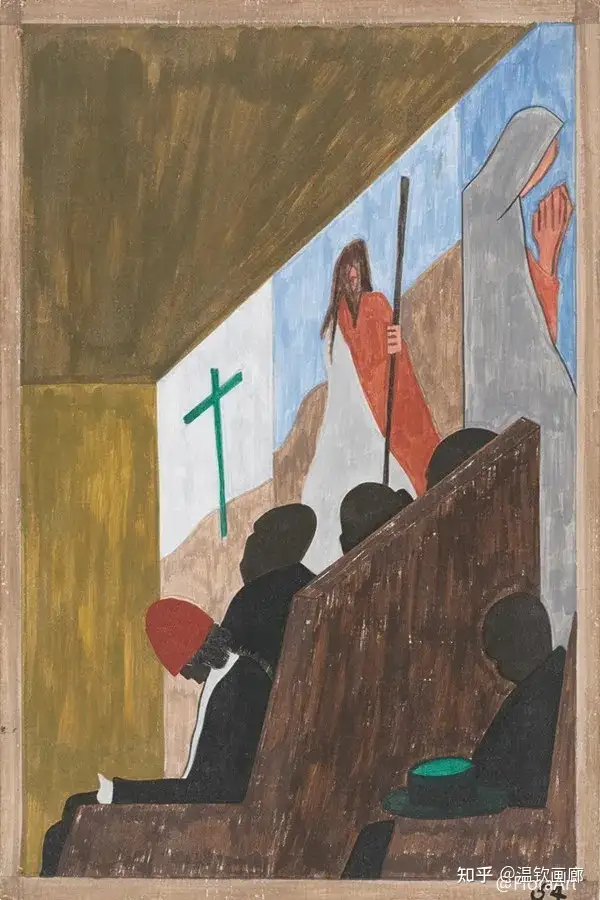
54 For migrants, the church was the center of life.
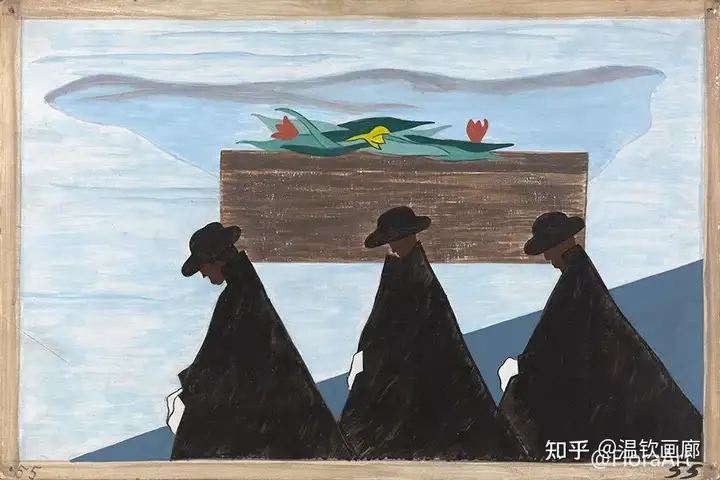
55 The migrants, having moved suddenly into a crowded and unhealthy environment, soon contracted tuberculosis. The death rate rose.
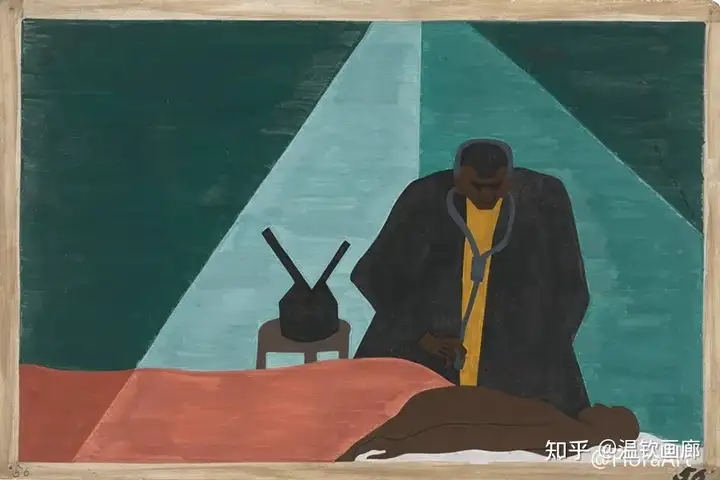
56 The African American professionals were forced to follow their clients in order to make a living.
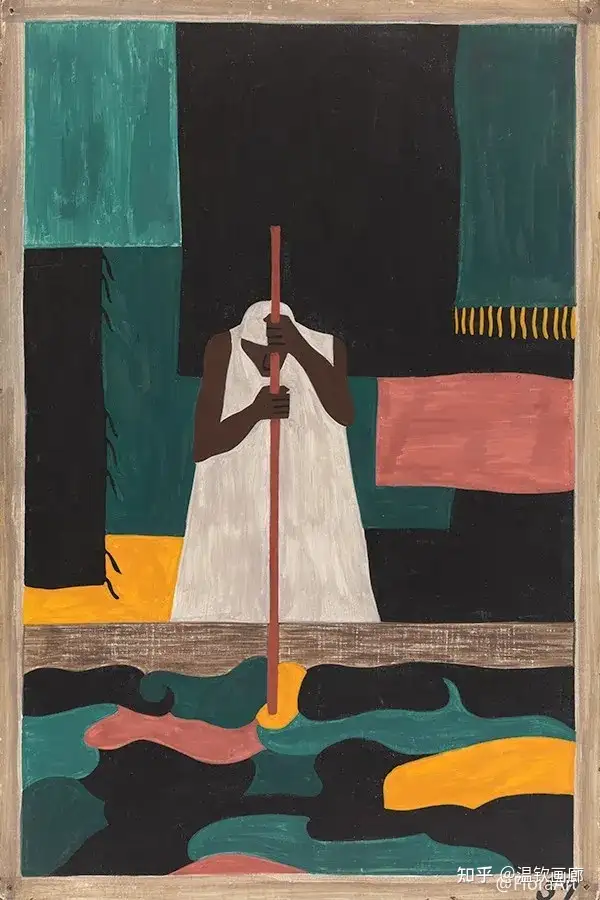
57 The female workers were the last to arrive north.
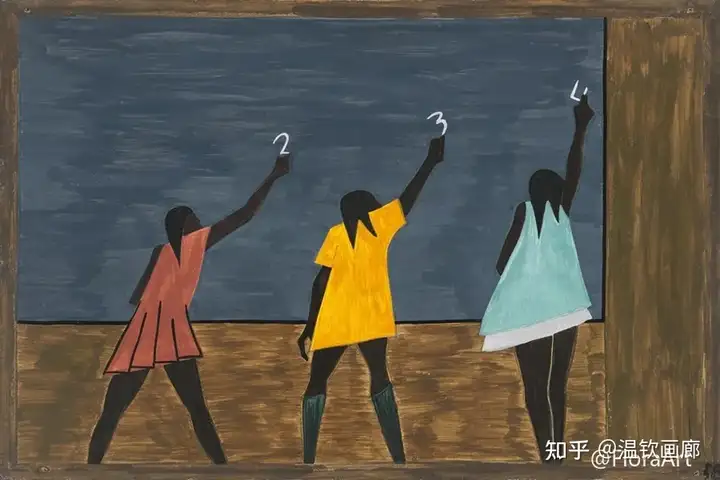
58 In the North the African American had more educational opportunities.
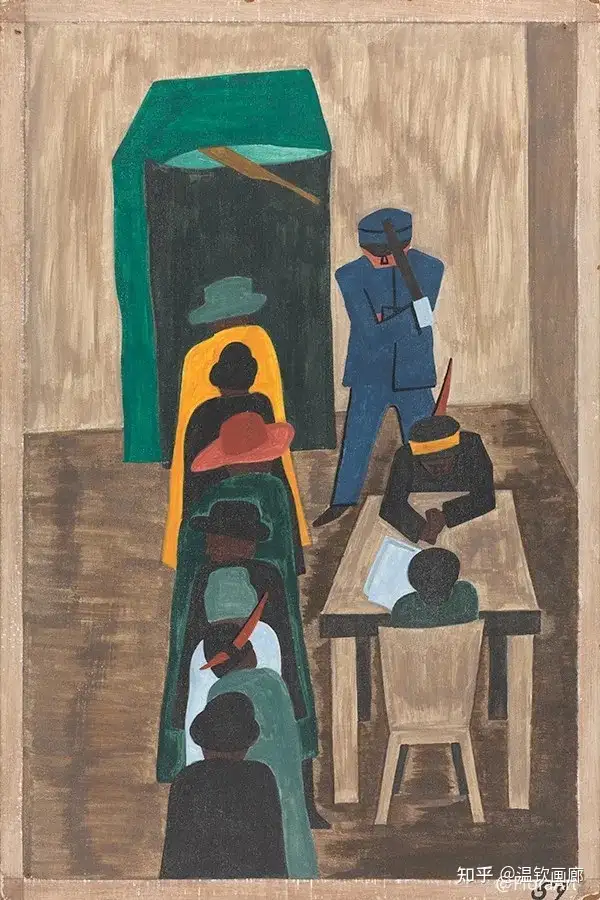
59 In the North they had the freedom to vote.
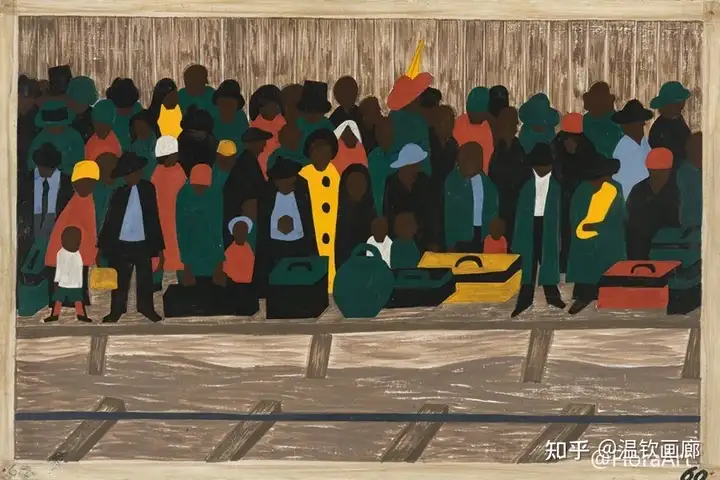
60 And the migrants kept coming.
艺术爱好者阿黛尔.罗斯瓦尔多.利维以一千美元的价格买下了这组系列画的所有偶数号的画,她把这些画送给了纽约市的现代艺术博馆。菲利浦收藏馆以同样的价格买下了这组系列画中所有奇数的画。因为劳伦斯在他的这组系列画中,只用三十张就清楚地讲述了一个完整的故事,而另外三十张板画所表达的是同样的内容。
由于这两个博物馆各自拥有这组系列画的一半,因此,想在一个地方看到这组完整的系列画是件非常罕见而又特殊的事情。在他晚年,雅各布.劳伦斯说他没有将黑人移民系列画创作成一个政治话题,他说,这只是他生活的一部分,也是他的朋友及其家人生活的一部分。雅各布.劳伦斯说,他希望这组系列画能够反映人类的经历和生存状况。他的黑人移民系列画是用艺术家的手法讲述了一段美国重要的历史,他是美国最伟大的画家之一。
除了画家、说书人和翻译,雅各布还是一名教育家。劳伦斯把他的风格称为“动态立体主义”,尽管据他自己的说法,主要的影响与其说是法国艺术,不如说是哈莱姆的形状和颜色。他将黑人和棕色与鲜艳的颜色并置,将非裔美国人的经历带入生活。他还任教并花了15年的时间在华盛顿大学担任教授。
雅各布·劳伦斯的《窗户》1977▽

埃尔莎.史密斯高尔:“它敲开我们仍然与之有关的这样一个普遍的主题,我们考虑有关奋斗、毅力和应变能力的主题,而且这些品质确实仍然存留在我们今天这个国家的移民的内心里。在当今的世里,估计有二亿移民。关于这组系列画,有一个可以肯定,那就是它超越了它所处的时代,它反映了一个重要的历史时期,而且,与此同时,它还为我们现在以及我们对未来的思考提供了大量的信息”。
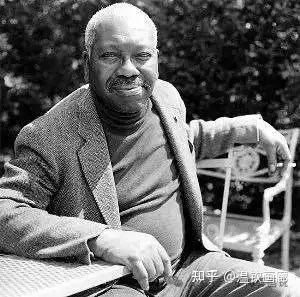
温钦画廊私洽代理国际顶流艺术家的原作(如果客户有其他特定艺术家作品的需求,我们会用海外艺术资源为您寻找): 巴勃罗·毕加索 Pablo Picasso,安迪.沃霍尔, 文森特.梵高Vincent Gogh, 亨利.马蒂斯Henri Matisse, 弗里达·卡罗 F.KAHLO, 格哈德·里希特 G.Richter, 威廉·阿道夫·布格罗 W A Bouguereau, 马克·夏加尔M. Chagall, 克劳德·莫奈 C.Monet, 伦勃朗·哈尔曼松·凡·莱因 Rembrandt, 圭尔奇诺 Guercino, 马蒂亚·普雷蒂 Preti, 翁贝特·波丘尼 U. Boccioni, 鲁西奥·芳塔纳 L.Fontana, 弗朗西斯·培根 F. Bacon, 让-米歇尔.巴斯奎特J.M.Basquiat, 拉斐尔·桑西 Raffaello, 卡纳列托 A. Canaletto, 保罗·委罗内塞 Veronese, 皮埃尔.奥古斯特.雷诺阿 P.A. Renoir, 保罗.塞尚P.Cezanne, 雷尼·马格利特 R.Magritte, 萨尔瓦多.达利 S. Dali, 阿梅代奥.莫迪利亚尼 A.Modigliani, 希罗尼穆斯·博斯 H.Bosch, 弗朗西斯科.戈雅 F.Goya, 彼得.保罗.鲁本斯 P.P. Rubens, 丁托列托 Tintoretto, 弗朗索瓦·布歇 F. Boucher, 安东尼·凡·克 A.Van Dyck, 弗朗西斯柯·德·苏巴朗 F. Zurbaran, 草间弥生, Kaws, 奈良美智, 赵无极等

哈莱姆文艺复兴,也被被称为“新黑人运动”,由1925年作家阿兰·洛克的诗集名字命名。哈林文艺复兴通常被认为开始于1918年左右一直跨越到30年代中期。它的许多思想在此后还存在了很长一段时间。这个“黑人文艺绽放”运动到达顶峰时期在1924年到1929年之间。
曾有作家描写道“哈菜姆不只是一个殖民地、定居地,更是一座黑人城市,位于白人聚居的曼哈顿中心,这里黑人比世界上任何地方都要多”。

The 306 Workshop Group in front of 306 West 141st Street,Late1930s
虽然哈莱姆文艺复兴集中在纽约曼哈顿的哈莱姆区,但是,许多住在巴黎的来自非洲和加勒比海殖民地的法语黑人作家也受到了哈莱姆文艺复兴的影响。这场运动旨在邀请非裔美国艺术家们通过实践各种艺术形式来打破对黑人的种种刻板印象、提高知名度的同时一并提升美国黑人的形象,很多作品主题以快乐为主,但艺术家们也并没有回避现实中尖锐的社会矛盾,比如:疏远、歧视、隔离,以及在一个白种人世界里,黑人身份的种种窘境。
哈莱姆文艺复兴中最著名的画家是雅各布·劳伦斯( Jacob Lawrence ,1917-2000年)。1937年,劳伦斯获得了纽约美国艺术家学院的奖学金。1939年毕业时,他获得了美国工作进展管理局联邦艺术计划的资助。他已经发展出了自己的现代主义风格,并开始创作叙事系列,在一个主题上绘画30幅或更多绘画。他完成了他最著名的黑人移民系列,1941年。该系列于1942年在伊迪丝·哈珀特(Edith Halpert)的市中心画廊展出,使劳伦斯成为第一个加入该画廊的非洲裔美国人。

雅各布·劳伦斯 恋人, 1946
在其青少年时期(30年代),他进入联邦政府资助的哈莱姆艺术工作室( Harlem Art Workshop )和哈莱姆社区艺术中心( Harlem Community Art Center )进行艺术方面的学习。劳伦斯经常到市中心区,从这里展出的艺术品中吸收灵感,从现代艺术博物馆的原始艺术展,到墨西哥织物,乃至所有欧洲最新的艺术风格。30年代晚期,他开始创作题献给黑人领袖的大型系列叙事画,他所敬献的人物包括哈里艾特.杜伯曼( Harriet Tubman )、图森·洛弗图尔( Toussaint L ' Ouverture )和弗雷德里克·道格拉斯( Frederick Douglass )。图像一般幅面较小、尺寸适中,用广告色在纸板或广告牌上绘制而成。
在第二次世界大战爆发时,劳伦斯被选入美国海岸警卫队。在佛罗里达州和马萨诸塞州短暂驻扎后,他被任命为部队士兵的海岸警卫队艺术家,记录了他环游世界时的战争经历。在此期间,他创作了近50幅画作,但最终全部丢失。劳伦斯旅行结束后,他获得了古根海姆奖学金。

雅各布·劳伦斯
红土 1947
硬纸板蛋彩画
1949年,他住进皇后区的希尔赛德医院,住了将近一年。作为设施的病人,他创作了反映自己情绪状态的艺术品,在其绘画中融入了柔和的色彩和忧郁的人物,这与他的其他作品形成了鲜明的对比。1951年,劳伦斯根据哈林区阿波罗剧院的表演记忆来绘画作品。他还再次开始教学,首先是在普拉特学院,后来在新的社会研究学院和艺术学生联盟。

哈莱姆街景,1942
1971年,劳伦斯在西雅图的华盛顿大学(University of Seattle)担任终身教授,直到1986年退休为止。在他任教期间,他度过了余生的大部分绘画工作,并制作了限量版画作以帮助为非营利组织提供资金,例如NAACP法律辩护基金,儿童辩护基金和朔姆堡黑人文化研究中心。他还为芝加哥的哈罗德·华盛顿中心,华盛顿大学和霍华德大学绘制壁画,并为纽约时代广场地铁站绘制72英尺的壁画。

“Self-Portrait”,1977
劳伦斯最为知名的作品是开始于1940年的《移民系列》( Migration Series )。其中表现了黑人移民北方的理由,以及其在南北两地的体验。虽然这个系列具有逸闻集的性质,但是图像本身却通过抽象的形式表达出很多意味,该系列中的第58号《黑人在北方享有更好的教育资源》( In the North the Negro Had Better Educational Facilities ,图28.54)

就是如此。三个女孩在黑板上写下数字,但是我们看不到她们的面孔。相反,人物的手臂越伸越长,数字的位置也越来越高,暗示教育对人素质的提升,而且开始部分的黑板空空如也。女孩色彩艳丽的衣裙是对生命与幸福的确认,而头发与裙子边缘则呈现出锯齿形和尖角形,显露出一股能量,以及奋斗不已的品质。劳伦斯在此主要展现了黑人的集体精神,这不是个人,也并非个人的表达。他关注人类的精神世界,精神无情而能量充沛地不断前行,以建构更美好的未来。劳伦斯疏朗且色彩优美的作品体现了一种非凡的心理状态,画面中对现代主义空间的运用更加强了这一点。平板的背景将人物推至画面表层,突出展示着他们的形象。

Bar ‘n Grill. 1937

The Life of Toussaint L’Ouverture. 1938

The Life of Harriet Tubman. 1940

Another great ravager of the crops was the boll weevil.1941

救护车呼叫, 1948 硬纸板蛋彩画

Sedation. 1950

Chess on Broadway. 1951

Struggle:From the History of the American People. 1956

The Architect. 1959
他少年得志,仅仅20出头就获得了大众的认可,最著名的作品是《migration series》以“移民”为主题的系列绘画。描绘了非洲裔美国人从主打农耕文化的南方田园到主打工业的北方城市的大迁徙过程。“移民”主题系列一共有60幅叙事型绘画作品。其中,奇数编号的画作在华盛顿菲利普斯收藏中心,偶数编号的画作在MOMA纽约当代艺术博物馆展出。
以下60幅《移民》系列作品转载自以上两个艺术中心:

1 During World War I there was a great migration north by southern African Americans.

2 The war had caused a labor shortage in northern industry. Citizens of foreign countries were returning to their native lands.

3 From every southern town migrants left by the hundreds to travel nor

4 All other sources of labor having been exhausted, the migrants were the last resource.

5 Migrants were advanced passage on the railroads, paid for by northern industry. Northern industry was to be repaid by the migrants out of their future wages.

6 The trains were crowded with migrants

7 The migrant, whose life had been rural and nurtured by the earth, was now moving to urban life dependent on industrial machinery

8 Some left because of promises of work in the North. Others left because their farms had been devastated by floods.

9 They left because the boll weevil had ravaged the cotton crop.

10 They were very poor.

11 Food had doubled in price because of the war.

12 The railroad stations were at times so crowded with people leaving that special guards had to be called to keep order.

13 The crops were left to dry and rot. There was no one to tend them.

14 For African Americans there was no justice in southern courts.

15 There were lynchings.

16 After a lynching the migration quickened

17 Tenant farmers received harsh treatment at the hands of planters.

18 The migration gained in momentum.

19 There had always been discrimination.

20 In many of the communities the black press was read with great interest. It encouraged the movement.

21 Families arrived at the station very early. They did not wish to miss their trains north.

22 Migrants left. They did not feel safe. It was not wise to be found on the streets late at night. They were arrested on the slightest provocation.

23 The migration spread.

24 Their children were forced to work in the fields. They could not go to school.

25 They left their homes. Soon some communities were left almost empty.

26 And people all over the South continued to discuss this great movement.

27 Many men stayed behind until they could take their families north with them.

28 The labor agent sent south by northern industry was a familiar presence in the black communities.

29 The labor agent recruited unsuspecting laborers as strike breakers for northern industries.

30 In every southern home people met to decide whether or not to go north.

31 The migrants found improved housing when they arrived north.

32 The railroad stations in the South were crowded with northbound travelers.

33 Letters from relatives in the North told of the better life there.

34 The black press urged the people to leave the south.

35 They left the South in great numbers. They arrived in the North in great numbers.

36 Migrants arrived in Chicago, the gateway to the West.

37 Many migrants found work in the steel industry.

38 They also worked on the railroads.

39 Railroad platforms were piled high with luggage.

40 The migrants arrived in great numbers.

41 The South was desperate to keep its cheap labor. Northern labor agents were jailed or forced to operate in secrecy.

42 To make it difficult for the migrants to leave, they were arrested en masse. They often missed their trains.

43 In a few sections of the South leaders of both black and white communities met to discuss ways of making the South a good place to live.

44 But living conditions were better in the North.

45 The migrants arrived in Pittsburgh, one of the great industrial centers of the North.

46 Industries boarded their workers in unhealthy quarters. Labor camps were numerous.

47 As the migrant population grew, good housing became scarce. Workers were forced to live in overcrowded and dilapidated tenement houses.

48 Housing was a serious problem.
.

49 They found discrimination in the North. It was a different kind.

50 Race riots were numerous. White workers were hostile toward the migrant who had been hired to break strikes.

51 African Americans seeking to find better housing attempted to move into new areas. This resulted in the bombing of their new homes.

52 One of the most violent race riots occured in East St. Louis.

53 African Americans, long-time residents of northern cities, met the migrants with aloofness and disdain.

54 For migrants, the church was the center of life.

55 The migrants, having moved suddenly into a crowded and unhealthy environment, soon contracted tuberculosis. The death rate rose.

56 The African American professionals were forced to follow their clients in order to make a living.

57 The female workers were the last to arrive north.

58 In the North the African American had more educational opportunities.

59 In the North they had the freedom to vote.

60 And the migrants kept coming.
艺术爱好者阿黛尔.罗斯瓦尔多.利维以一千美元的价格买下了这组系列画的所有偶数号的画,她把这些画送给了纽约市的现代艺术博馆。菲利浦收藏馆以同样的价格买下了这组系列画中所有奇数的画。因为劳伦斯在他的这组系列画中,只用三十张就清楚地讲述了一个完整的故事,而另外三十张板画所表达的是同样的内容。
由于这两个博物馆各自拥有这组系列画的一半,因此,想在一个地方看到这组完整的系列画是件非常罕见而又特殊的事情。在他晚年,雅各布.劳伦斯说他没有将黑人移民系列画创作成一个政治话题,他说,这只是他生活的一部分,也是他的朋友及其家人生活的一部分。雅各布.劳伦斯说,他希望这组系列画能够反映人类的经历和生存状况。他的黑人移民系列画是用艺术家的手法讲述了一段美国重要的历史,他是美国最伟大的画家之一。
除了画家、说书人和翻译,雅各布还是一名教育家。劳伦斯把他的风格称为“动态立体主义”,尽管据他自己的说法,主要的影响与其说是法国艺术,不如说是哈莱姆的形状和颜色。他将黑人和棕色与鲜艳的颜色并置,将非裔美国人的经历带入生活。他还任教并花了15年的时间在华盛顿大学担任教授。
雅各布·劳伦斯的《窗户》1977▽

埃尔莎.史密斯高尔:“它敲开我们仍然与之有关的这样一个普遍的主题,我们考虑有关奋斗、毅力和应变能力的主题,而且这些品质确实仍然存留在我们今天这个国家的移民的内心里。在当今的世里,估计有二亿移民。关于这组系列画,有一个可以肯定,那就是它超越了它所处的时代,它反映了一个重要的历史时期,而且,与此同时,它还为我们现在以及我们对未来的思考提供了大量的信息”。

上一篇:大卫·霍克尼的泳池系列作品
下一篇:关于春天的油画

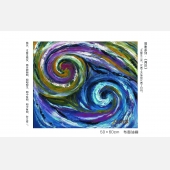 庞明璇
庞明璇 未知
未知 张大千
张大千 黄琦
黄琦 测试用艺术
测试用艺术 胡江
胡江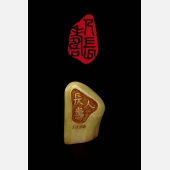 陈维廉
陈维廉 魏新
魏新




